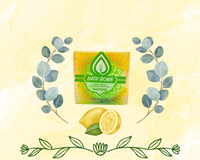So, What is Cannabis?

For those new to CBD, it is often hard to grasp the difference between traditional cannabis sold at dispensaries and that of hemp derived CBD products. As a reminder, CANNABIS is the name of the plant species that both marijuana and hemp belong to. Traditionally, MARIJUANA has high THC content/low CBD content, lots of flowering buds, and produces the psychoactive effect that is often associated with consumption of THC. Alternatively HEMP has low THC content/high CBD content, less flowering buds, and is often used both for consumption and also for agricultural purposes. This is where we begin to diverge, hemp, for its two main purposes, CBD production and industrial production.
The Properties of Hemp
Hemp for CBD

Hemp that is grown for CBD extraction is grown with the flowers in mind, as that is where the oil is processed from. This means that seeds for growing this type of hemp are feminine, i.e. they are used to produce high CBD content flowering plants which tend to cost more to grow and maintain. These seeds are not the same ones that are used for consumption through things like hemp milk or hemp based protein powders!
CBD plants need room to grow, much like the plants that are grown for marijuana, this means that plants are several feet apart and are tended to individually. This allows them to grow more like Christmas trees than like a field of wheat which is bunched together tightly. Unfortunately, this does mean that growing hemp for CBD is much more tedious, it requires constant monitoring and manicuring of the plants much like that of growing traditional marijuana.
When the hemp plants are ready to harvest, oil is extracted from the flowers through a process involving solvents like CO2, ethanol, or butane and is then further refined to make the products that are seen on shelves. This is where we at Discover CBD come in!
Industrial Hemp

Hemp that is grown industrially is completely different, instead of focusing on the production of large flowering plants, industrial hemp is grown quite like that of other large crops such as wheat, corn, or barley. This type of hemp is grown with long tall stalks, which contain the fiber and the woody core that is used for industrial purposes. The seeds used to plant industrial hemp are male, this is what helps to produce the large amount of seeds and tall stalks. When consuming hemp in things like hemp milk, protein powder, and hemp hearts, that is sourced from industrial hemp. This is because the seeds from industrial hemp are full of protein, vitamins and minerals!
Industrial hemp is grown much like other large producing crops, this means that seeds are planted close together and packed in for a much higher yield. Once fully grown, traditional farm equipment can be used to harvest the hemp! Just like other high yield crops, the hemp is chopped down and then bailed up like hay and transported for processing. Farming industrial hemp is much easier and cheaper than what is required to grow large amounts of hemp for CBD, this means industrial hemp has more range outside of the cannabis industry.
During the processing period, industrial hemp is mechanically separated into different parts to be used, this is starkly different from the chemical extraction process used in hemp for CBD. After processing, industrial hemp is sold in large quantities, up to tons, and is used in the manufacturing process of products from several different industries including textiles, construction, and food service. As industrial hemp becomes more popular there is hope that it can replace some of the less renewable and more toxic filler that is often used in manufacturing goods.
So, What's the Big Deal?

Why should you care about the difference between hemp for CBD and industrial hemp? In order for hemp to be used in a sustainable and profitable manner, it is important to first educate the public and the possible growers about the benefits, setbacks, and legalities that arise when producing all forms of cannabis, especially hemp. Separating industrial hemp from the stigma that often surrounds marijuana and even CBD is an important step towards manufacturers becoming comfortable with using industrial hemp in place of their current resources. In the end, if hemp is destigmatized and used in manufacturing at a large level this will help lead to more understanding around the possible benefits of cannabis in all its forms. Overall, education can be the first step to making cannabis and hemp derived products accessible to more people at an affordable price!
Conclusion

If you'd like to learn more about hemp; its uses, its production, and all the legal information, check out https://www.ams.usda.gov/rules-regulations/hemp . The U.S. Department of Agriculture site details the 2018 Farm Bill which sets the precedent for hemp growing and its updates as recent as January of 2021.
Want more in depth information about hemp? Check out our blog page at https://discovercbd.com/blogs/cbd-news for blog posts covering all the uses of hemp!


























